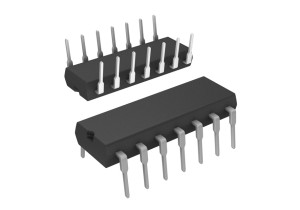While these terms are often used interchangeably, they represent distinct components with unique functionalities and applications. Understanding the differences between microprocessors and microcontrollers is essential for designing efficient and optimized electronic systems. Let's delve into the intricacies of these components, exploring their features, applications, and key differentiators.
Unveiling the Microprocessor:
Definition:A microprocessor is a central processing unit (CPU) that integrates the core processing functions of a computer system on a single chip. It is designed to execute instructions, perform arithmetic and logic operations, and manage data flow within a system.
Features:
● High processing power and speed.
● Limited peripheral integration.
● Typically used in applications requiring intensive computational tasks, such as PCs, servers, and high-performance devices.
● Requires external components for memory, input/output (I/O) interfacing, and system control.
Decoding the Microcontroller:
Definition:A microcontroller is a compact integrated circuit that combines a microprocessor core with memory, input/output peripherals, and interfaces on a single chip. It is designed for embedded systems and applications that require control, monitoring, and automation functions.
Features:
● Lower processing power and speed compared to microprocessors.
● Integrated memory, I/O ports, timers, and other peripherals on the same chip.
● Ideal for applications demanding real-time control, such as automotive systems, IoT devices, and consumer electronics.
● Self-contained and requires minimal external components for operation.
Key Differences:
1. Integration:Microcontrollers are highly integrated with memory, I/O peripherals, and interfaces on a single chip, while microprocessors require external components for these functions.
2. Processing Power:Microprocessors typically offer higher processing power and speed compared to microcontrollers, making them suitable for tasks that demand intensive computation.
3. Applications:Microcontrollers are commonly used in embedded systems for control and real-time operations, while microprocessors are preferred for applications requiring high computational performance.
4. Cost and Complexity:Microcontrollers are generally more cost-effective and simpler to implement due to their integrated design, whereas microprocessor-based systems may require additional components, increasing complexity and cost.
Choosing the Right Component for Your Application
In the dynamic landscape of electronic systems design, selecting the appropriate component—whether a microprocessor or microcontroller—is crucial for optimizing performance, efficiency, and functionality. By understanding the distinctions between these components in terms of integration, processing power, applications, and cost, designers and engineers can make informed decisions that align with the requirements of their projects.
As technology continues to evolve and diversify, the roles of microprocessors and microcontrollers will remain pivotal in shaping the capabilities and functionalities of electronic devices and systems. By embracing the unique strengths of each component and leveraging their distinct features, innovators can unlock new possibilities and drive advancements in a wide range of industries, from IoT and automation to telecommunications and beyond.

